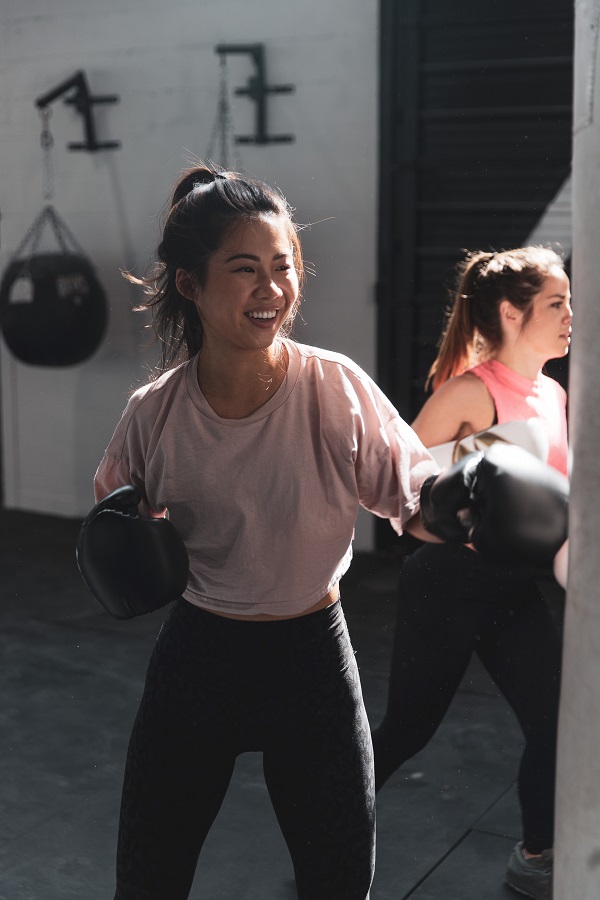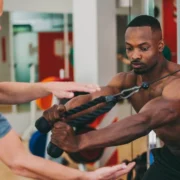Bigger Studios, Higher Prices: Post-Pandemic Fitness Strategies

Club Industry’s “The Future of Fitness” panel discusses the importance of communication and marketing strategies, instructor relationships, and investment allocation in the post-pandemic fitness world
The “Business Trends” presentation continued with a panel moderated by Peter Moore, Managing Partner at Integrity Square, a NYC-based financial advisory and early-stage growth equity company focused on the HALO (Health, Active, Lifestyle & Outdoors) sector. The panelists were Geoff Dyer, Principal and Strategic Advisor of CR Fitness Holdings (Crunch), Frank Lawrence, CEO of Little Rock Athletic Centers, and Jessica Yarmey, CEO of Kickhouse, a modern kickboxing studio franchise.
Moore began the conversation with a question on how their businesses navigated COVID-19, and fitness strategies they would maintain post-pandemic or in the “new normal.”

Lawrence spoke of the importance of communication. Little Rock Athletic Centers was unique in that they never stopped billing customers. “We worked with our members, gave them credits during the periods we were closed. That communication to members and owners/investors was very important,” Lawrence stated. Dyer’s Crunch Fitness leveraged social media aggressively, posting daily updates from managers while their competition shut down, transparency that led to increased consumer loyalty. Yarmey began Kickhouse during the pandemic, citing her faith in the importance of in-person fitness for seeing results. She also noted the importance of space, “As we add more stations into classes [post-pandemic], we are still maintaining diligence around class utilization and maximizing the spaces that we have. I think there is a lot that we built right out of the gate that will pull forward and position us well for success in […] the new normal.”
Another key tactic for Dyer and Lawrence was preparedness, which fostered trust. Upon reopening, Crunch’s CEO went out to every region and met with the different teams. Little Rock Athletic Centers created videos outlining the member journey upon returning to the studio. Personalized touchpoints reminded members of the importance of an in-person fitness community. Social media maintained awareness and drove excitement when doors re-opened. Most of the panelists felt that newer digital marketing tactics have also helped the fitness industry, as most interested members give their phone numbers and e-mails upon sign-up. This strategy helped drive retargeting to bring about better retention numbers.
The Club Industry’s Future of Fitness panel also discussed how shifting consumer behavior has impacted investment allocation. For example, Geoff Dyer noted that Crunch’s real estate investment strategy shifted to buying larger spaces (40-50 thousand square feet) to accommodate consumer preferences and improve retention numbers. Lawrence stated that Little Rock Athletic Centers discontinued providing food and beverage, which brought about cost reduction without a perceived loss of quality: “Yes, the crisis of COVID seems to be over, but […] you have to improve your offerings to stay competitive.”
Raising fitness prices was also a necessary facet of the post-pandemic world. Although the panelists were worried that these increases would anger their customer base, most felt the hikes had little-to-no negative impact on business. Increasing price merely meant raising standards, so ensuring that their offerings also improved in quality was integral.
The trainer and studio relationship was also a key discussion point during the panel. As Moore pointed out, some studios are more instructor-focused and others are more programming-focused. He noted, “Soul Cycle basically said, […] ‘I’m going to focus on being like the New York Yankees, getting the best players, while Orangetheory Fitness said, ‘There’s a classic 5, 6, 7, 8, 9, 10 o’clock, it doesn’t matter who the instructor is, because they’re like the team leader.” Being instructor-focused has risks of athletes leaving the gym if their trainer goes independent. Although all the panelists acknowledged this risk, they also maintained the importance of keeping a good relationship with trainers/instructors. When trainers feel connected to the studio’s larger culture and satisfied with their customer base, business opportunities, and benefits, they are less likely to leave.
When asked about their main fitness industry takeaways from the pandemic, the panelists agreed that COVID-19 reaffirmed the importance of fitness communities and the value of in-person experiences. Moore concluded with an anecdote about an in-person experience visiting a fitness club. In the morning, upon entering, he greeted a cleaning lady. Later that evening, he saw the same woman and asked if she was working two shifts. She said that she lived nearby and just wanted to check to make sure the studio was clean. Moore concluded, “Respect everyone who works for you, because [they all have an] important role in making your brand what it is. A little act of kindness every now and again goes a long way.”



